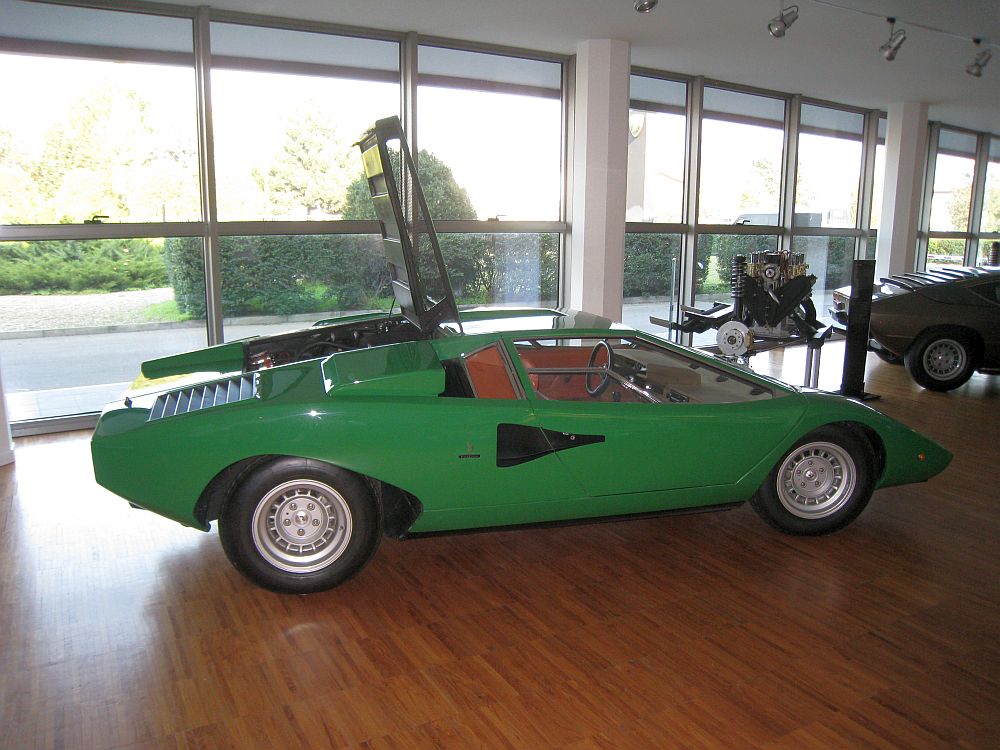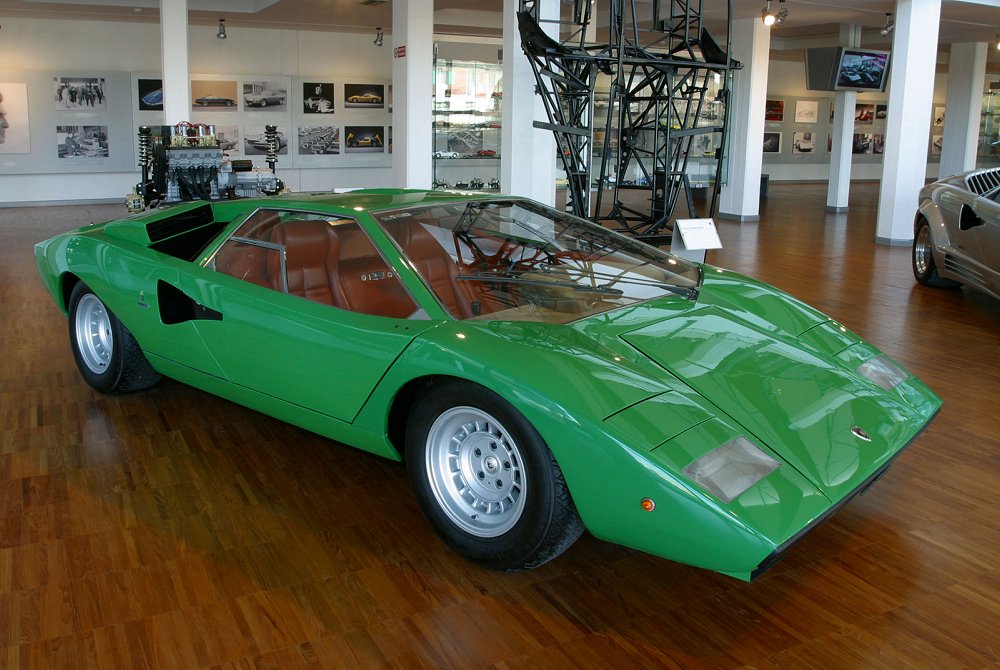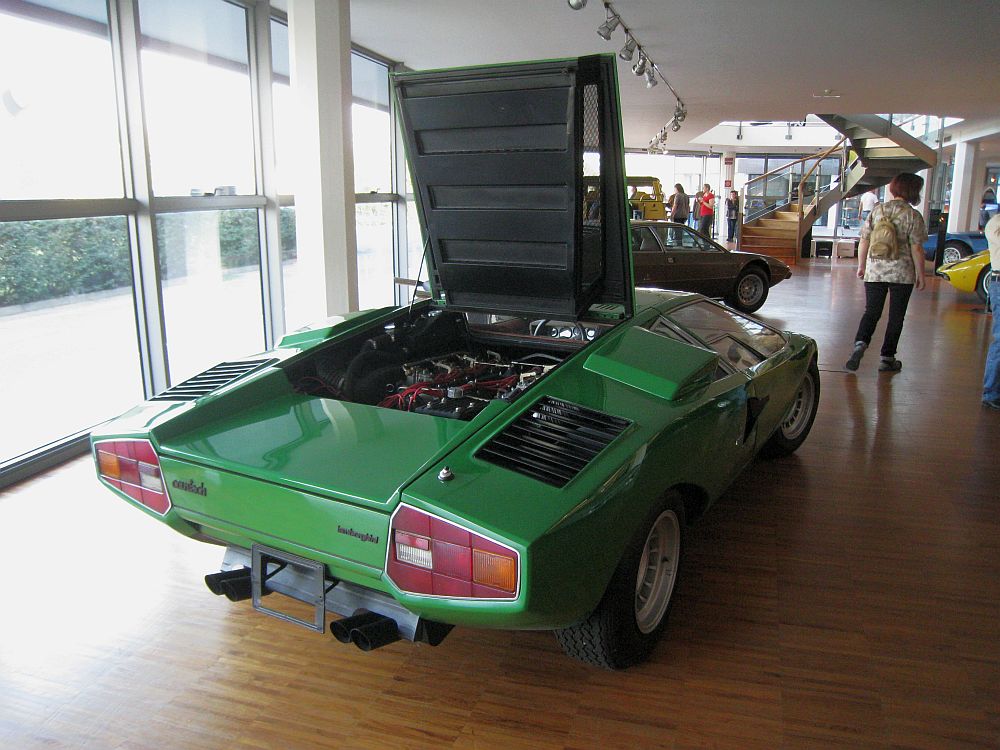Description
The Lamborghini Countach LP 400, introduced in 1974, was the first production version of the car that would become one of the most recognizable and influential supercars in history. It transformed the radical vision of the 1971 LP 500 prototype into a working, road-legal machine, preserving its futuristic design while refining it into something both drivable and breathtakingly fast. The LP 400 marked a new chapter for Lamborghini—a car that redefined the supercar formula with its combination of wild styling, advanced engineering, and blistering performance.
After the overwhelming reaction to the LP 500 prototype, Ferruccio Lamborghini was determined to bring the Countach to production. The engineering team, led by Paolo Stanzani with input from test driver Bob Wallace, worked to adapt the concept’s daring proportions and innovative layout for real-world use. The 5.0-litre V12 of the prototype had proved too fragile for production, so the team reverted to a proven 3,929 cc version of Lamborghini’s quad-cam V12, the same engine used in the Miura, re-engineered for longitudinal installation. Mounted directly behind the passenger compartment and ahead of the rear axle, the engine layout established the template for all future Lamborghini supercars.
The LP 400 designation stood for “Longitudinale Posteriore 4.0,” describing both the engine’s placement and its displacement. The 3.9-litre V12 produced 375 horsepower at 8,000 rpm and 361 Nm of torque, enough to propel the car from 0 to 100 km/h (62 mph) in around 5.6 seconds and to a top speed of 315 km/h (196 mph). Even by modern standards, these figures were impressive, but in the mid-1970s they were astonishing—making the LP 400 one of the fastest road cars in the world. Power was sent to the rear wheels through a five-speed manual gearbox positioned ahead of the engine, with a driveshaft running back through the sump to the differential—a unique solution that optimized weight balance and cabin space.
The chassis of the LP 400 was a lightweight tubular spaceframe, clothed in aluminium panels designed and assembled by Bertone. Marcello Gandini’s styling, refined from the LP 500 prototype, remained almost unchanged in its essence. The Countach looked like a spacecraft compared to its contemporaries, with its razor-edged wedge profile, scissor doors, and impossibly low stance. Every angle served a purpose: the sharp nose reduced aerodynamic lift, the flat sides channelled airflow, and the rear deck sloped gently toward the car’s truncated tail. Air intakes on the rear shoulders fed the mid-mounted engine, while the engine bay’s louvred cover added both functionality and drama. The LP 400’s body was narrower and cleaner than later versions, free of the wings, flares, and vents that would come to characterize the 1980s Countach.
The cabin of the LP 400 was compact, intimate, and distinctly focused on the driver. The seating position was low, almost horizontal, and the dashboard minimalistic, with round dials set into a simple instrument binnacle. Visibility was limited, especially to the rear, but the sense of occasion was unmatched. The interior materials—leather, brushed aluminium, and exposed switchgear—gave it a purposeful yet exotic feel. The narrow door sills and upward-opening scissor doors created a dramatic entry and exit, turning every arrival into a performance of its own.
On the road, the LP 400 delivered an experience unlike any other car of its era. The mid-engine layout and lightweight chassis provided balance and agility, while the engine’s sharp throttle response and screaming exhaust note created a sense of raw immediacy. Steering was heavy at low speeds but precise once moving, and the suspension—double wishbones with coil springs and telescopic dampers—kept the car stable even at extreme speeds. The gearbox required deliberate effort, and the clutch was firm, yet every input felt mechanical and deeply connected. The LP 400 was not a car that tolerated half-measures; it demanded commitment, but it rewarded skill with an experience of unmatched intensity.
Production of the LP 400 began in 1974 and continued until 1978, with just 150 examples built. Each car was hand-assembled at Lamborghini’s Sant’Agata factory, and no two were exactly alike. Customers could specify colours and trims, and many cars were finished in vivid hues—bright yellow, orange, and lime green—that complemented the Countach’s extroverted personality. Because of its purity and elegance, the LP 400 later became known as the “Periscopio,” referencing the unique periscope-style rear-view channel built into the roofline of early examples—a feature that was later abandoned in subsequent models.
The Countach LP 400 established the foundation of the Lamborghini legend. It represented not just a car, but a design revolution—a distillation of speed, technology, and fantasy into a single form. It replaced the flowing curves of the Miura with sharp planes and geometric precision, influencing generations of supercars from Ferrari, Lotus, and others.
Today, the Lamborghini Countach LP 400 is regarded as one of the most beautiful and collectible cars ever built. Its design remains as shocking and fresh as it was in 1974, a perfect embodiment of Lamborghini’s daring philosophy: to defy convention, to provoke emotion, and to create machines that exist as much in the imagination as on the road. The LP 400 was not just the beginning of the Countach story—it was the moment the modern supercar was born.





